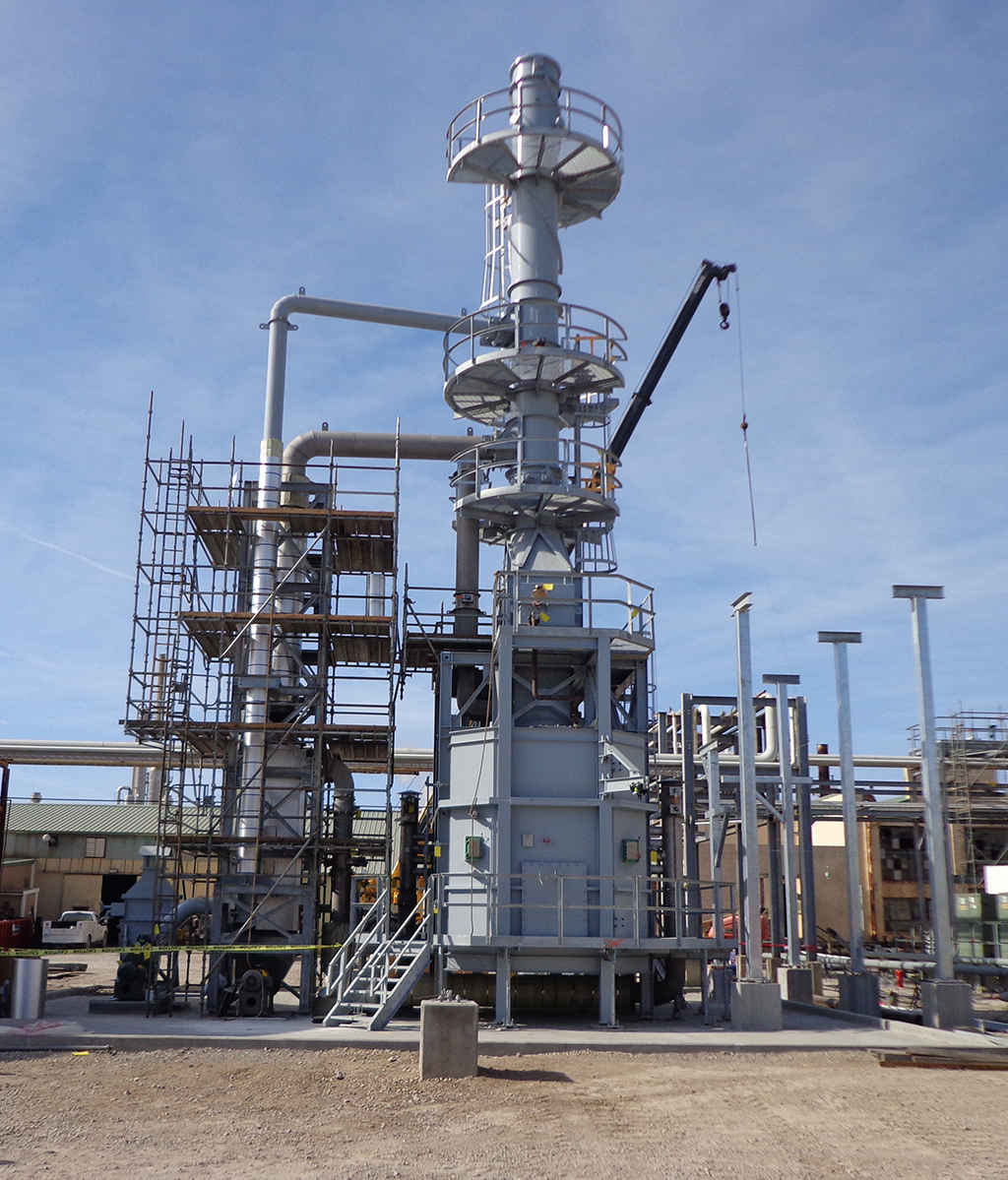Great Southern Flameless (GSF) is dedicated to providing the most advanced solutions available to meet end user’s fired heater process and emissions goals.
Flameless combustion technology, also referred to as HITAC (or high temperature air combustion), is not a new technology. It is most often associated with the higher temperature processes of the steel and glass industry.

Applying flameless technology to direct fired refinery heaters presents several unique design challenges. GSF has developed innovative technology that creates flameless combustion at radiant flux rates and flue gas temperatures common to refinery process heaters. GSF’s new technology also meets the industry’s stringent requirements for safety, reliability, operability, and maintainability.
This patented technology permits a wide range of operation (fuel type and turndown) and a wide selection of heater types. GSF now offers a conventional process heater design that can also be operated in Flameless mode for extreme NOx reduction (down to 3-8 ppm) without an SCR. Flameless heater technology improves efficiency (91% – LHV) significantly increases run lengths, reduces fuel consumption and decreases CO2 greenhouse gases by 10-20%.
GSF is dedicated to leading the industry into the next generation of fired heaters. GSF will work with the end user to design and build new heaters or retrofit existing heaters to be safely operated in both conventional and flameless modes.
We invite you to inquire about Great Southern Flameless heaters for your upcoming heater needs.
Flameless Crude Heater
Coffeyville Resources Refining and Marketing purchased from Great Southern, a Crude Heater resulting from a Consent Decree settlement with the United States Environmental Protection Agency. The heater is capable of operating in conventional firing mode, staged fuel firing mode or flameless firing mode. The decree calls for NOx at or below 8ppmvd while operating in the flameless mode.
Flameless Crude Heater by Great Southern Flameless, LLC – One of two flameless nozzle groups (each at 5.5 MM Btu/hr LHV heat release) switching from conventional combustion to flameless combustion.
The flameless heater has been in crude service operation since March 15, 2013. The heater has achieved flameless operation with >850°F preheated combustion air. CEMS recorded average NOx = 4.9 ppmvd without SCR (Refinery Fuel Gas).
The flameless heater defies the current API 530 document which specifies that a 1.2:1 peak to average circumferential radiant heat flux is typical for a double fired coil. A GSF flameless heater will always be a double fired coil but the peak to average flux for the flameless heater is 1.0:1.0, therefore the API 530 circumferential factor is in error for a double fired flameless heater. While API 530 does not specify a longitudinal factor, it is commonly agreed to be between 1.1:1 and 1.4:1. The ratio for the GSF double fired coil with tangential firing is 1.0:1.0. By equalizing the radiant heat flux, localized hot spots on the process coil are eliminated.
Another unique feature of the flameless heater is the radiant section flue gas recirculation zone. CFD modeling has revealed that the radiant section flue gas recirculation rate is more than four times greater than a conventional heater. This high rate of flue gas recirculation is due to the tangential firing configuration and the high momentum imparted by the fuel and air nozzles. The recirculation zone is the area between the tube face of the process coil and the refractory walls of the heater. The flue gas velocity in the non-recirculation zone is typical of conventional radiant section velocities of 3-6 ft/sec.
Hot gas or flame impingement cannot occur with the flameless heater technology due to several features:
- Patented castable refractory dimple pattern on the interior radiant walls. The patented dimple pattern is used to help pin the recirculating flue gas to the wall and prevent it from impinging on the radiant coil.
- The recirculation zone between the coil and the refractory is properly designed for the high volume of flue gas in circulation, ie. ample space is provided to ensure that hot recirculating flue gasses do not contact the process coil.
Most heater shutdowns for cleaning the radiant coil are the result of localized high flux rates and high fouling rates. The localized high flux rates are caused by flame or hot gas impingement on the process coil. This issue is eliminated with the GSF flameless heater technology and thereby allows for extended run length.
| Average Radiant Flux | Peak to Average Flux Ratio (Circumferential Factor) | API 530 Peak | Longitudina I Factor | Overal Peak Flux Rate | |
|---|---|---|---|---|---|
| Traditional Single Fired Heater | 10,000 | 1.8 (S.F.) | 18,000 | 1.33 | 24,000 |
| GSF Flameless Double Fired Coil | 21,000 | 1.0 | 21,000 | 1.0 | 21,000 |
Performance Update: The flameless heater has been in crude service operation since March 15, 2013. The heater has achieved flameless operation with >850°F preheated combustion air. CEMS recorded average NOx = 4.9 ppmvd without SCR (Refinery Fuel Gas).
We invite you to inquire about Great Southern Flameless heaters for your upcoming heater needs.
